How to Wear a Weightlifting Belt: Everything You Should Know
Author:
Unlock your full potential by engaging with our experts and community! Have questions about your fitness journey or looking for expert advice on weightlifting techniques? Don’t hesitate — leave a comment below and Oleksiy Torokhtiy will provide a personalized answer and insights to help you reach your goals.
Torokhtiy is reader-supported. Some links are affiliate links, and we may earn a commission at no extra cost to you. See our disclosure page for details.
Most weight lifters need to wear a belt whenever they’re trying to break personal records or just on heavy lifting days. However, often, many don’t know the specifics of how to wear lifting belt and end up not getting any benefits from this accessory. That’s why, in this article, we will give you all the information you need on using a lifting belt for maximum training benefits.
Do you wonder how to wear a weightlifting belt? A weightlifting belt should be worn securely but not too tightly. Along with that, it should fit your torso so that it can provide maximum support throughout your workouts and not cause you discomfort.
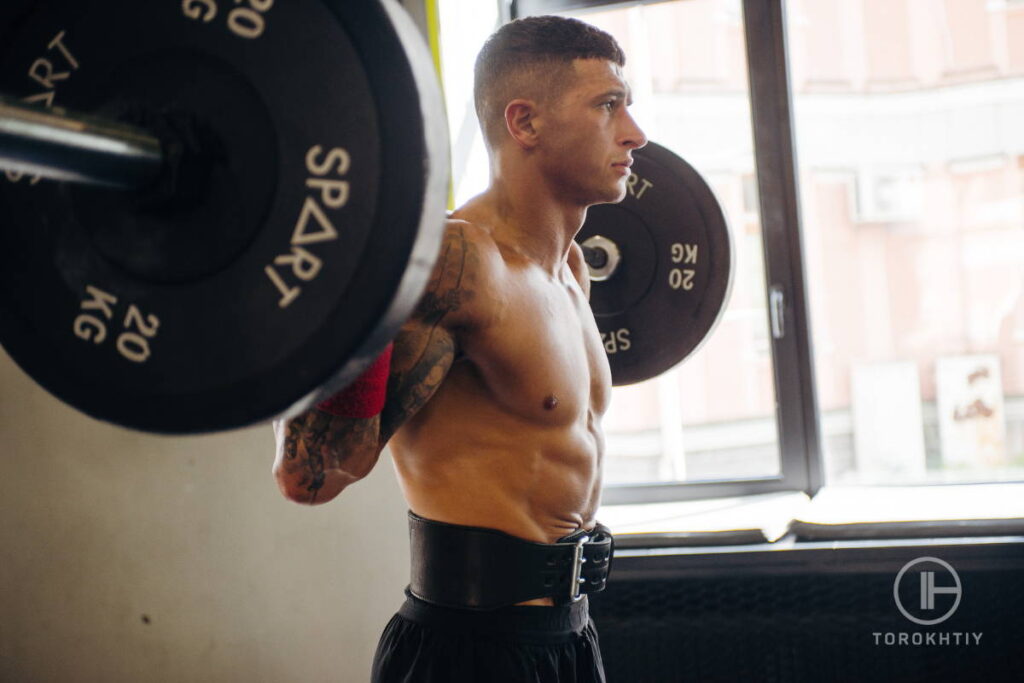
Where to Wear a Weightlifting Belt?
Typically, belts are used by Olympic weightlifters, Strongman competitors, and other athletes whenever they have to lift more than 80% of their one rep maximum. Generally, belts are used during training sessions, as well as during some competitions. However, this tends to vary as it depends entirely on the athlete and their skill level. Here, it’s vital to note that lifting with a belt requires practice and skill, and if you choose to use one, you have to incorporate it into your training sessions, especially if you plan on competing.
Having said that, some lifters will drop the belt and go without during certain training blocks. That’s typically done in an effort to help the athlete build core strength and work on some of the weaknesses that wearing a belt can mask.
Factors to Consider While Wearing a Belt
Wearing a belt sounds like it shouldn’t be that complicated; however, in reality, there are many factors that you need to consider before using one in your training sessions. Those include typical questions like “How should a weightlifting belt fit” and what size it should be, to others which you may not have thought about, like the material the belt is made from and how thick it is. All these things matter, and getting them right will help you get the most out of this lifting accessory.
For example, a thicker belt is suitable for heavier lifts, like squats and deadlifts, where there isn’t too much dynamic movement. That’s because thicker belts are typically more rigid, and so they offer more support to the spine. However, if you plan on using the belt for more dynamic exercises like snatch or C&J, then a belt that’s too thick might be making it more difficult for you to lift your desired weight. Along with that, a belt should fit the lifter’s torso, and generally, it should rest over the lower back and abdominals without restricting the movement of the upper body. If the belt doesn’t fit well (regardless if it’s too wide or skinny), you may get rubbing on the skin and other types of discomfort, from which your performance will start to suffer. That’s why it’s vital that, as an athlete, you try on the belt you’re planning to buy so that you can be certain it has the right fit for your body type.
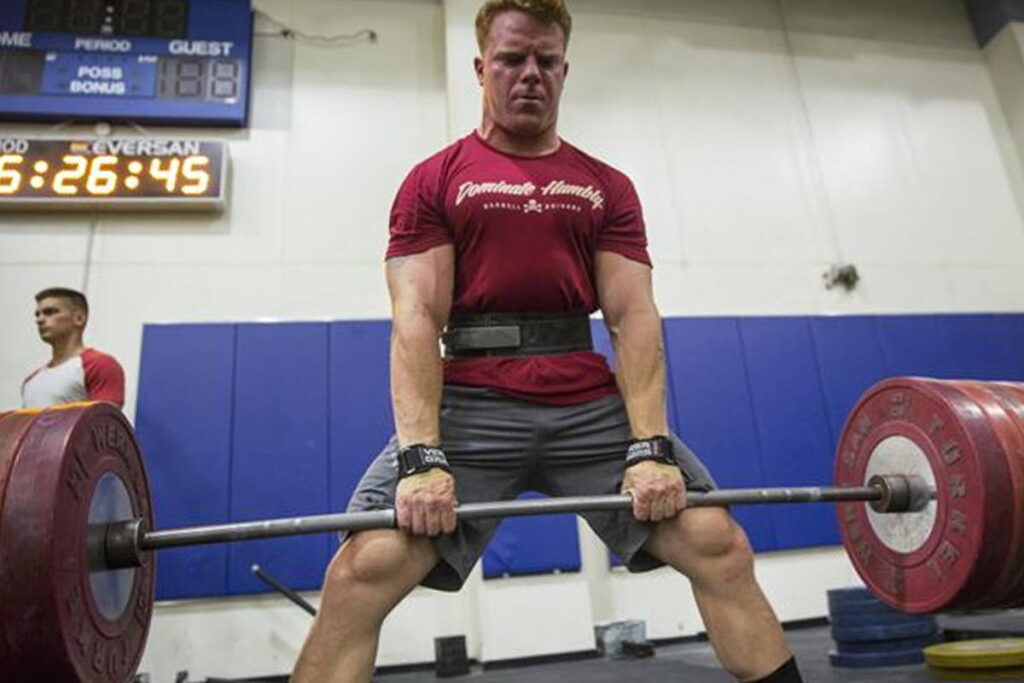
How to Wear a Weight Lifting Belt (step-by-step guide with tips)
Most lifters assume they can just buy a weightlifting belt from the store, put it on, and that’s it – from that point on, they will start to feel the benefits immediately. Even though learning how to put on weight belt is not rocket science, by learning some tips and tricks, you can get more benefits out of wearing a lifting belt, as well as feel more secure and stable during your workout.
Now, let’s take a look at a step-by-step guide on how to wear a weightlifting belt, along with some tips on how to make the use of the belt even more beneficial.
Step 1: The Belt Should be Placed Around Your Waist
If you want to put the belt on in the best possible position, you have to place it just above your hip bone and ensure it has full contact with your lower back, the sides of your waist, and your abdominals. A good thing to remember here is that if you find the belt restrictive or uncomfortable in some areas, you have to adjust it to its proper position. Then, if it still bothers you, then that’s a sign that either the belt is not the right size or it’s too thick for you.
Step 2: Take a Breath and Tighten the Belt
Once you’ve ensured the proper weightlifting belt placement, it’s time to inhale slightly and tighten the belt. It’s vital to remember that the belt should fit tightly and snugly, but it shouldn’t restrict your breathing. You have to leave enough room for your stomach to expand; otherwise, later on, you won’t be able to brace and create tension using your core muscles.
Step 3: Breathe Out and Test the Belt
The whole idea behind wearing a weightlifting belt is to ensure that your back feels more stable during heavy lifting. And as we all know, your back is firstly protected by your core muscles, which you should be able to tighten and expand, even when wearing the belt. In fact, the job of the belt is to enable you to brace more. To do so, you only have to breathe deeply with your stomach and flex your core muscles and lower back. Then, you need to remain in that same position while performing the lifting exercise. With that said, you have to remember that a belt cannot fix poor form or lack of good mechanics. It can only enhance the performance of athletes, who already have proper form and know how to brace themselves and work under heavy loads.
Wearing Different Types of Lifting Belts
Not all lifting belts are made the same; in fact, there are big differences between the different types of weightlifting belts, and you need to be aware of them before making a purchase. That’s the only way to find out what kind of belt you need, based on your training style, goals, and the kind of support you hope to get from this lifting accessory. Below, we will take a more in-depth look into three types of lifting belts: prong, lever, and nylon, along with some information on what kind of athlete each type is suitable for.
Prong Belt
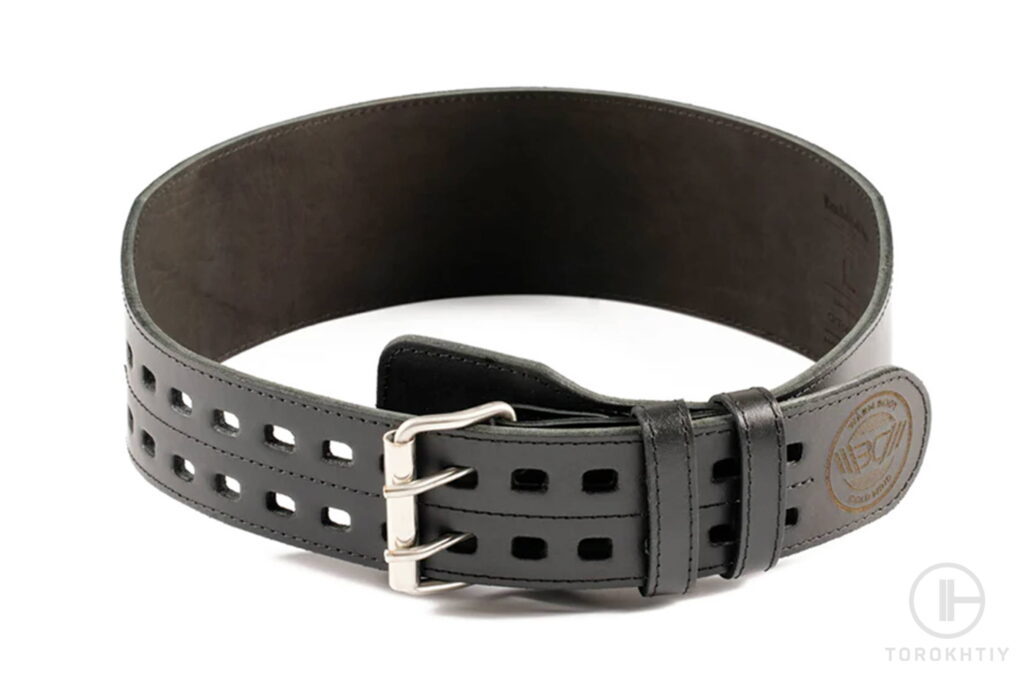
The whole idea behind wearing a weightlifting belt is to ensure that your back feels more stable during heavy lifting. And as we all know, your back is firstly protected by your core muscles, which you should be able to tighten and expand, even when wearing the belt. In fact, the job of the belt is to enable you to brace more. To do so, you only have to breathe deeply with your stomach and flex your core muscles and lower back. Then, you need to remain in that same position while performing the lifting exercise. With that said, you have to remember that a belt cannot fix poor form or lack of good mechanics. It can only enhance the performance of athletes, who already have proper form and know how to brace themselves and work under heavy loads.
Lever Belt
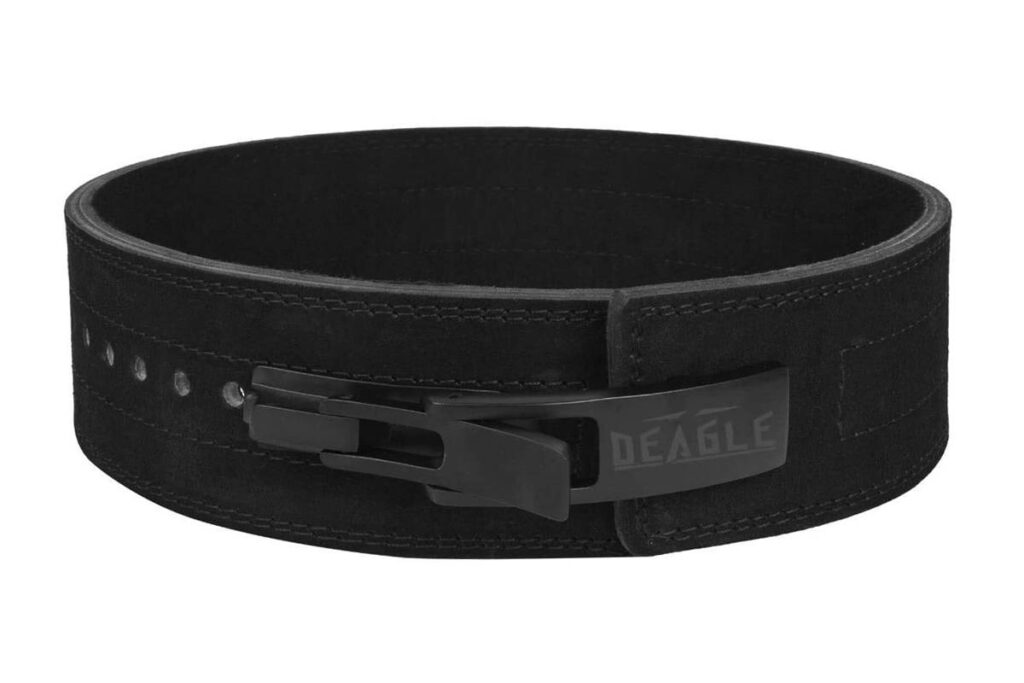
As you can probably tell by the name alone, a lever belt uses a lever system to create a secure fit. That means that you have to hook the “teeth” of the belt to the holes and then close the buckle. This makes lever belts perfect for athletes who need a really secure fit and like to wear their belts as tight as possible. Along with that, you can adjust the fit entirely on your own, and you don’t need anchor points to get it to be very tight around your waist.. With that said, you need to remember that it’s harder to adjust a lever belt according to the athlete’s size and that, typically, lever belts are more expensive, so it’s good to do your research before deciding to get one.
Nylon Belt
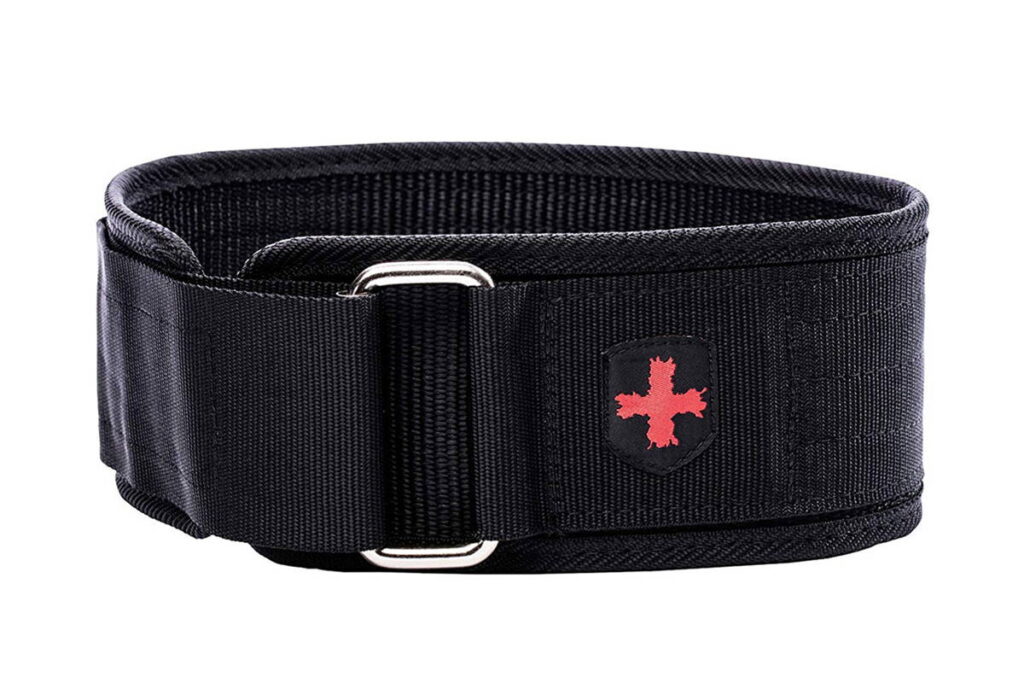
Weightlifting belts are typically made either from leather or nylon. And while most of you might rightly assume that leather belts are more durable and offer a greater level of support, nylon belts aren’t useless at all. Nylon belts are a terrific choice for fitnessers because they enable the athlete to have more mobility during dynamic movements and they’re not as bulky as leather belts usually are. This is extremely vital when doing exercises like the clean and jerk, where the bar needs to be kept close to the body. Because nylon belts are typically slimmer, the chance of the bar catching them is reduced. They are also more comfortable, breathable, lighter, and easier to take on and off, making them a good fit for fitness athletes.
Common Lifting Belt Wearing Mistakes
Seeing a weightlifting belt at the gym is a fairly common sight, as many people wear them even if they don’t need to. However, that’s far from the only mistake that athletes make when it comes to wearing weightlifting belts. Let’s take a look at two common weightlifting belt-wearing mistakes that you might be making.
Wearing a Belt at All Times
Here, it’s first vital to note that proper weight belt placement is key. Then, it’s good to remember that you don’t need a lifting belt for all of your training sessions. If you have a training session where the focus is on isolated movements such as bicep curls, tricep pushdowns, or leg extensions, you don’t need to wear a lifting belt. That’s because during such workouts, you’re not lifting close to your maximum, and you’re also not performing compound movements, which rely on the stability of your core. You’re doing isolated work on a particular muscle group, and so the extra support is simply not needed. With that said, if you have a session and you know you will be performing compound exercises and Olympic weightlifting-style movements, then you can wear a belt to get more support and to be able to lift more weight. However, even during such workouts, it’s good to wear a belt; only when you get close to the maximum weight, you can lift for a particular exercise.
Not Using Your Abdominal Muscles
As already mentioned, the lifting belt isn’t there to replace the work you have to do with your core. Regardless of whether you’re squatting, deadlifting, or performing clean and jerks, your core has to remain engaged throughout the entire duration of the exercise. That is why experts will always tell you to take a deep breath and brace yourself while wearing the belt so that you can get the most out of the support it provides to the abdominal muscles.
FAQs
How Do You Know If Your Weightlifting Belt is Too Tight?
If you find it difficult to breathe or if you feel like you might explode, then that’s an indication that your belt is too tightly secured. Even though a tight fit is useful, being unable to engage your core properly will ultimately lead to poor performance and diminish any benefits the belt might bring you.
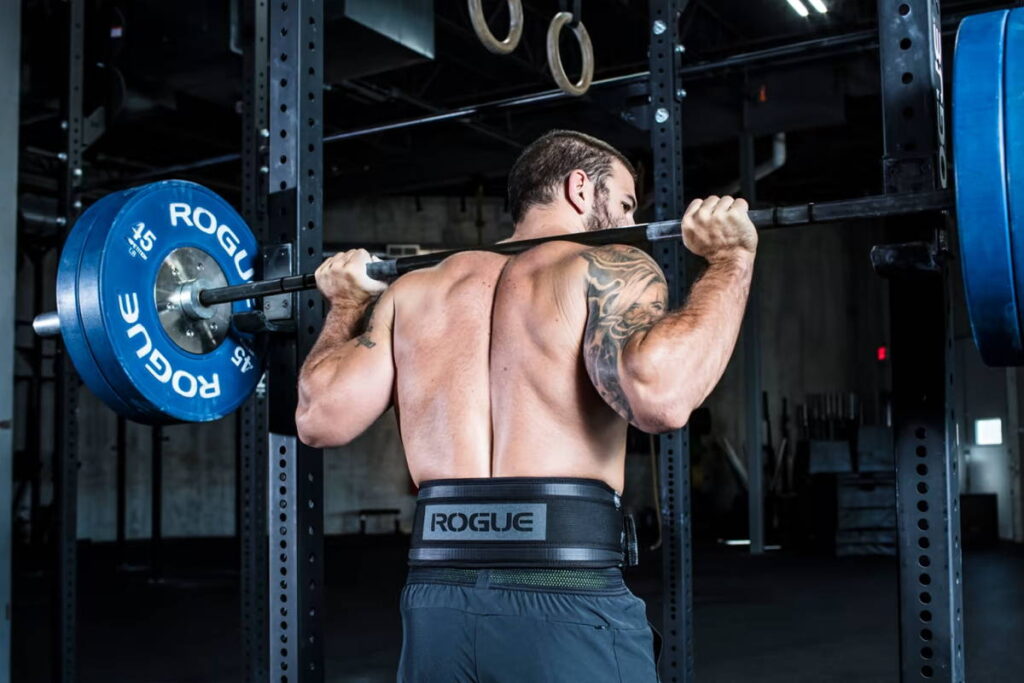
Does a Weightlifting Belt Weaken Your Core?
On its own, a weightlifting belt does not weaken your core. It simply helps stabilize and support your already existing core muscles. With that said, in order to get strength in your abdominals, it’s good to incorporate training sessions where you don’t use a weightlifting belt.
How to Break in a Lifting Belt?
In order to break in a lifting belt, you need to wear it often. In addition to that, you can roll it lightly, warm it up and also use liquids like olive oil and rubbing alcohol to speed up the break-in process.
In Conclusion
Using a lifting belt is vital for athletes who often lift heavy weights and who want to improve their performance. With that said, not many know how to properly wear a weightlifting belt, which is why this article is here to help you get the maximum benefits out of this lifting accessory. However, please remember that how you use a lifting belt still entirely depends on the sport you’re in, your goals, and your training style and regime. As lifters, do you use lifting belts? And if you do, what are the benefits you’ve noticed from them in your training regime? Let me know in the comments below.
Also read:
- When to Use Lifting Belt
- Wearing a Belt While Benching
- 10mm vs 13mm Belt
- Powerlifting Belt vs Weightlifting Belt
- Best Weight Lifting Belt for Women
- Deadlift Belt Placement
- Best Deadlift Belt
- Cluster Workout
References:
- What is a one-rep max? // HPRC:
https://www.hprc-online.org/physical-fitness/training-performance/what-one-rep-max - Dynamic Exercise // ScienceDirect:
https://www.sciencedirect.com/topics/medicine-and-dentistry/dynamic-exercise - How to Add Compound Exercises to Your Workout Routine // Healthline:
https://www.healthline.com/health/fitness-exercise/compound-exercises - A Comprehensive Guide to Engaging Your Core // Healthline:
https://www.healthline.com/nutrition/how-to-engage-your-core
Why Trust Us?
With over 20 years in Olympic weightlifting, strength training, nutrition coaching, and general fitness our team does its best to provide the audience with ultimate support and meet the needs and requirements of advanced athletes and professional lifters, as well as people who strive to open new opportunities and develop their physical capabilities with us.
By trusting the recommendations of our certified experts in coaching, nutrition, and sports training programming, as well as scientific consultants, and physiotherapists, we provide you with thorough, well-considered, and scientifically proven content. All the information given in the articles concerning workout programming, separate exercises, and athletic performance, in general, is based on verified data.
The product testing process is described in more detail here.
Author: Oleksiy Torokhtiy
Olympic Weightlifting Champion
Best Results: Snatch – 200 kg,
C&J – 240 kg
Oleksiy Torokhtiy is a professional athlete boasting 20 years of experience in Olympic weightlifting. With multiple European and World titles under his belt, he has showcased his prowess in two Olympic Games (Beijing 2008 and London 2012). Upon concluding his illustrious career, Oleksiy dedicated himself to coaching. By 2022, he had conducted over 200 weightlifting seminars worldwide. He is the visionary behind an international sportswear and accessories brand known for its motto, “Warm Body Cold Mind.” Additionally, he is an esteemed author and the creator of a series of training programs and eBooks.



Still have questions after reading our article? Unlock your full potential by engaging with our experts and community! Don’t hesitate — leave a comment below and Oleksiy Torokhtiy will provide a personalized answer and insights to help you reach your goals.